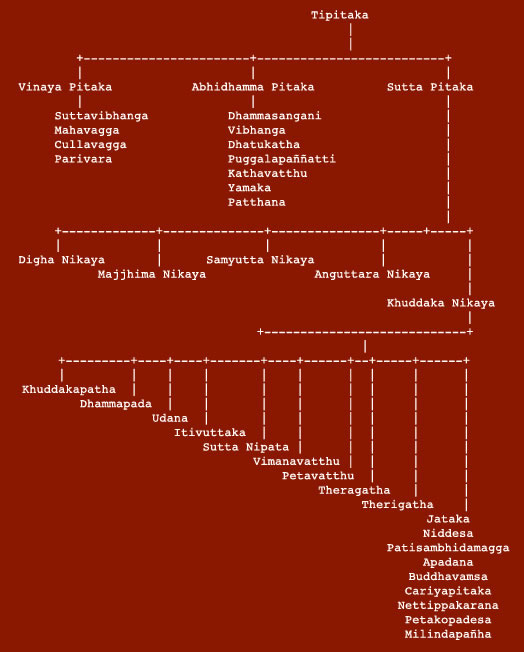Tipitaka The Tipitaka (Pali ti, "three," + pitaka, "baskets"), or Pali Canon, is the collection of primary Pali language texts which form the doctrinal foundation of Theravada Buddhism. Together with the ancient commentaries, they constitute the complete body of classical Theravada texts.
|

